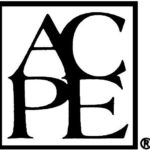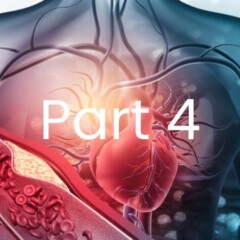Last updated on
The Critical Importance of Lowering LDL-C in High-Risk Patients
The Cholesterol Wars: Navigating a Shifting Battlefield –
The Critical Importance of Lowering LDL-C in High-Risk Patients
This course has expired for CME credit, however you can still view and access the event recording.
Table of Contents
ACTIVITY DESCRIPTION / STATEMENT OF NEED
Statin therapy is the recommended treatment for lowering low-density lipoprotein cholesterol (LDL-C) and reducing atherosclerotic cardiovascular disease (ASCVD) risk. However, evidence-based and guideline-recommended therapies, including ezetimibe and PCSK9 inhibitors, continue to be underutilized, even among the highest risk patients. Consequently, an unmitigated burden of cardiovascular risk persists. More education is urgently needed to address this problem. To that end, NATF invites you to join us for a virtual series of webinars that discuss some of these key issues in cholesterol management.
AGENDA
INTENDED AUDIENCE
This program is designed for physicians, pharmacists, nurse practitioners, physician assistants, nurses, and allied healthcare professionals in the fields of internal medicine, primary care, family medicine, hospital medicine, cardiology, and endocrinology.
COST
Participation in this activity is free.
This activity is supported by an educational grant from Amgen
LEARNING OBJECTIVES
Upon completion of the educational activity, participants should be able to:
- Review the evidence/rationale for treating patients with elevated LDL-cholesterol.
- Identify how cardiovascular risk is estimated and the importance of other risk factors beyond LDL-cholesterol.
- Recognize that variability in response to cholesterol-lowering therapy exists that, in part, informs residual cardiovascular risk.
- Develop or modify a lipid management plan based on cardiovascular risk stratification.
- Describe two additional non-statin medications that can be used to lower residual risk.
- Describe two tests that may be ordered to further identify high-risk patients.
FACULTY AND DISCLOSURES

Allen Taylor, MD
Chairman of Cardiology
Medstar Heart and Vascular Institute
Washington, DC
Disclosures: Speaker’s Bureau: Amgen, Esperion

Ty J. Gluckman, MD, MHA, FACC, FAHA, FASPC
Medical Director, Center for Cardiovascular Analytics, Research, and Data Science (CARDS)
Providence Heart Institute
Portland, OR
Disclosures: Consultant: Premier Healthcare

Margo B. Minissian, PhD, ACNP, FAHA
Executive Director, Nursing Institute
Simms Mann Family Endowed Chair in Nurse Education, Innovation and Research
Assistant Professor, Cardiology
Cedars-Sinai Medical Center, Los Angeles, CA
Disclosures: Grant Funding (Significant > $10,000): National Institute for Nursing Research 4R00NR018679-03 1K99NR018679-01 and F31NR015725, National Center for Advancing Translational Sciences Grant UL1TR000124, Grant UL1TR001881-01, Beta Chi Chapter, Cedars-Sinai Precision Health Center, National Institute of Health Foundation/ Ogilvy , Preventive Cardiovascular Nurses Association/ American Nurses Foundation
Honorarium (Significant ˃$5,000): NACCME, LLC
Co-Chair for CME and consultant: Vox Media, Medtelligence
ACCREDITATION
This activity has been planned and implemented in accordance with the accreditation requirements and policies of the Accreditation Council for Continuing Medical Education (ACCME) through the joint providership of ScientiaCME and the North American Thrombosis Forum. ScientiaCME is accredited by the ACCME to provide continuing medical education for physicians.
Physicians: ScientiaCME designates this online enduring activity for a maximum of 1.00 AMA PRA Category 1 CreditTM. Physicians should claim only credit commensurate with the extent of their participation in the activity.
Nurse Practitioners (NPs): The American Academy of Nurse Practitioners accepts AMA PRA Category 1 Credit(s)™ from organizations accredited by the ACCME. ScientiaCME will provide NPs who successfully complete each activity with a certificate of participation indicating that the activity was designated for AMA PRA Category 1 CreditTM.
Physician Assistants: The American Academy of Physician Assistants accepts AMA PRA Category 1 CreditTM from organizations accredited by the ACCME.
Nurses: may claim credit for activities approved for AMA PRA Category 1 CreditTM in most states for up to 50% of the nursing requirement for recertification. Nursing board continuing education requirements for relicensure vary state-by-state.
Medical Practice Executives: The American College of Medical Practice Executives accepts AMA PRA Category 1 CreditTM from organizations accredited by ACCME.
Pharmacists:
ScientiaCME is accredited by the Accreditation Council for Pharmacy Education (ACPE) as a provider of continuing pharmacy education.

This activity is approved for 1.00 hour (0.10 CEUs) of continuing pharmacy education credit. Proof of participation will be posted within 4 to 6 weeks to the NABP CPE profiles of participants who have successfully completed the post-assessment with a passing score of 70%.
ACPE UANs and activity types: 0574-9999-22-046-H01-P
This activity is a Knowledge (K)-type activity.
Released: November 22, 2022
Expires: November 22, 2023



